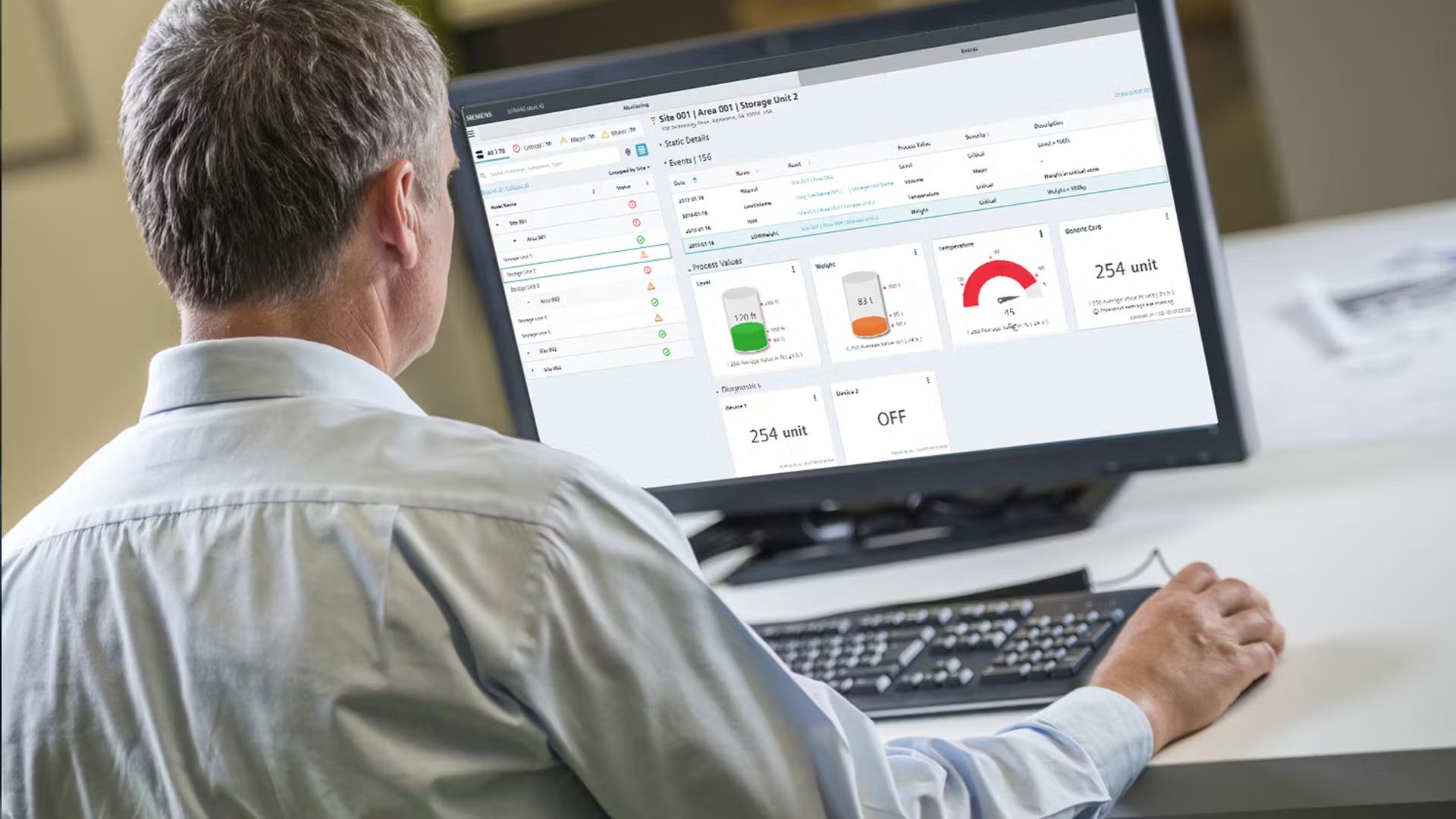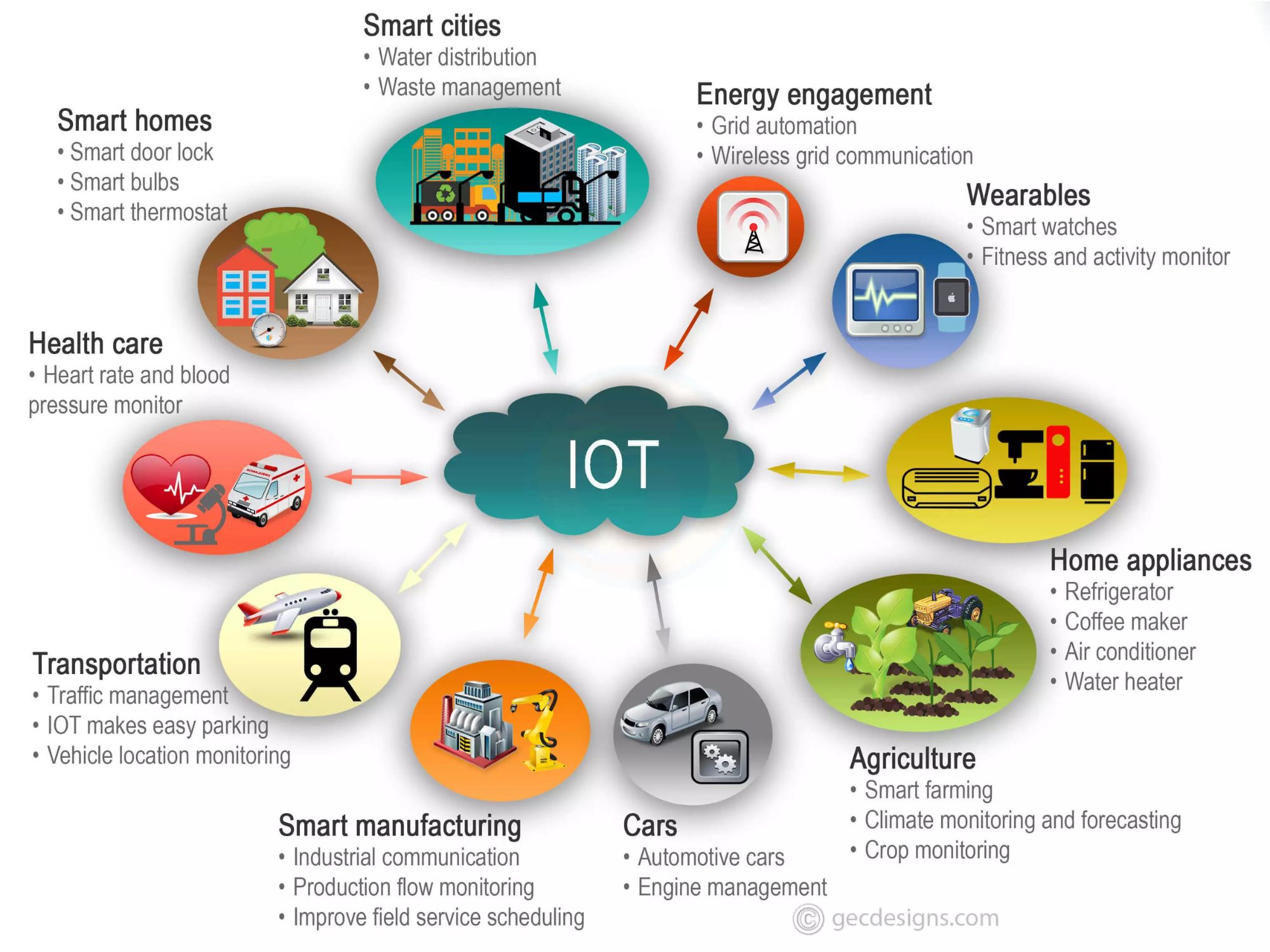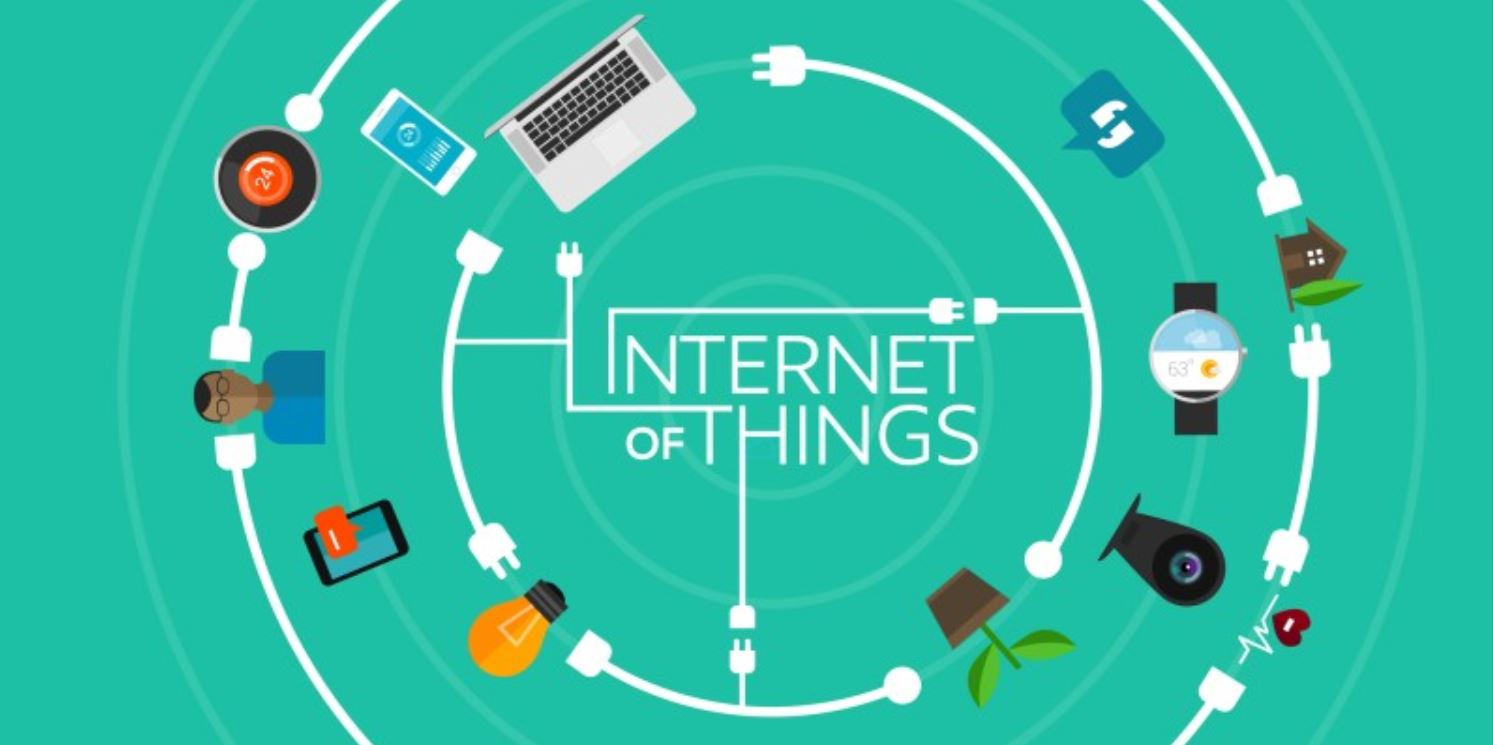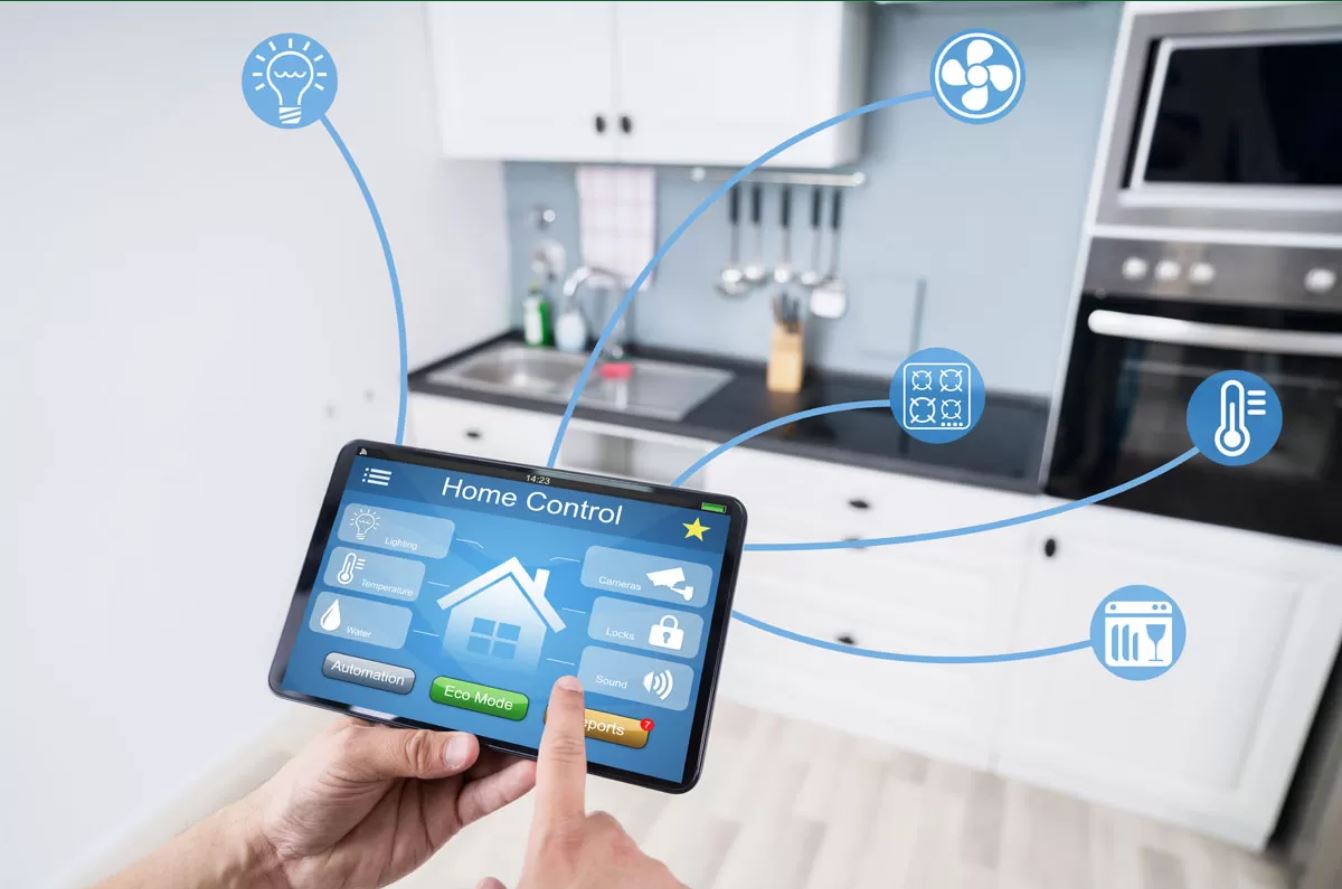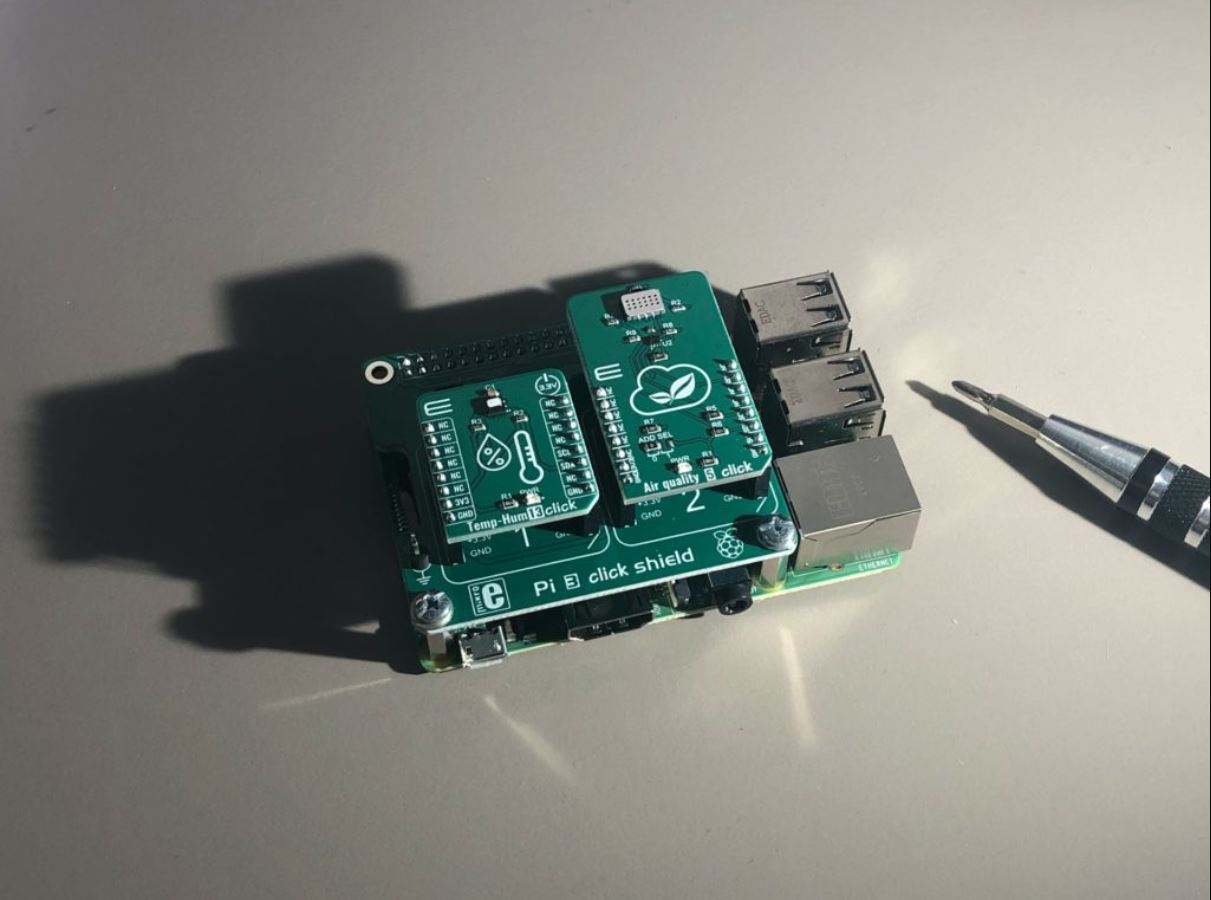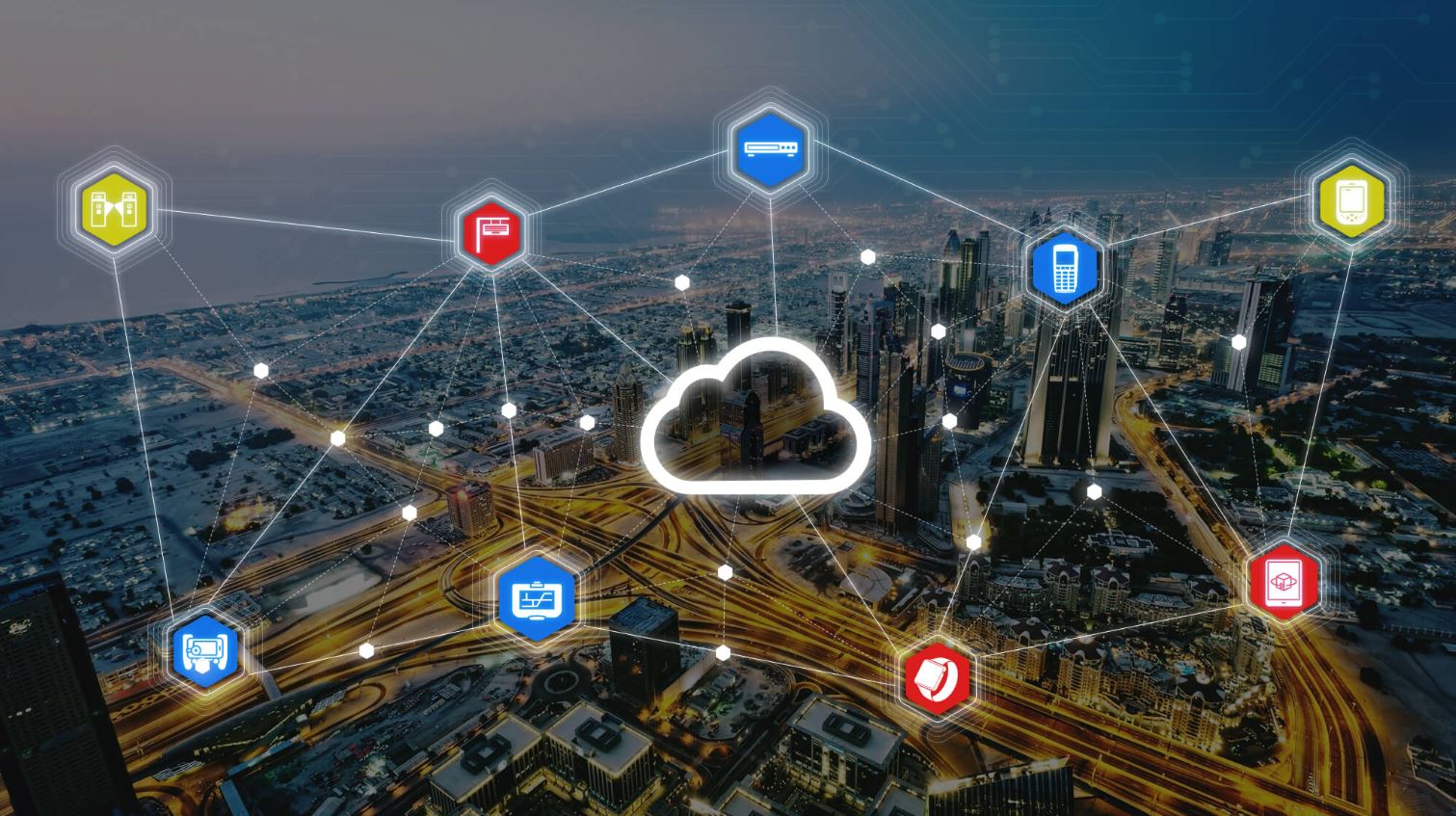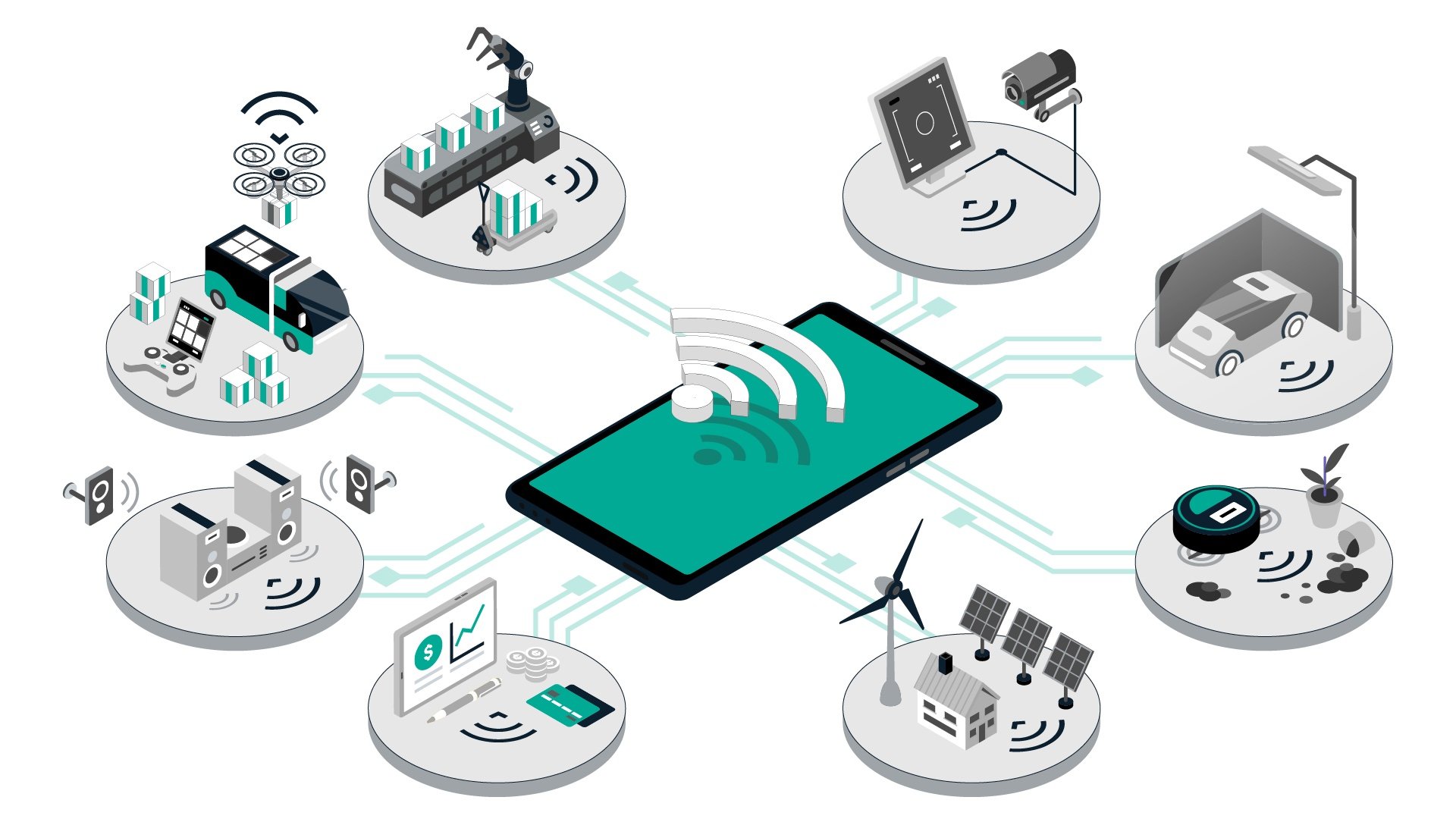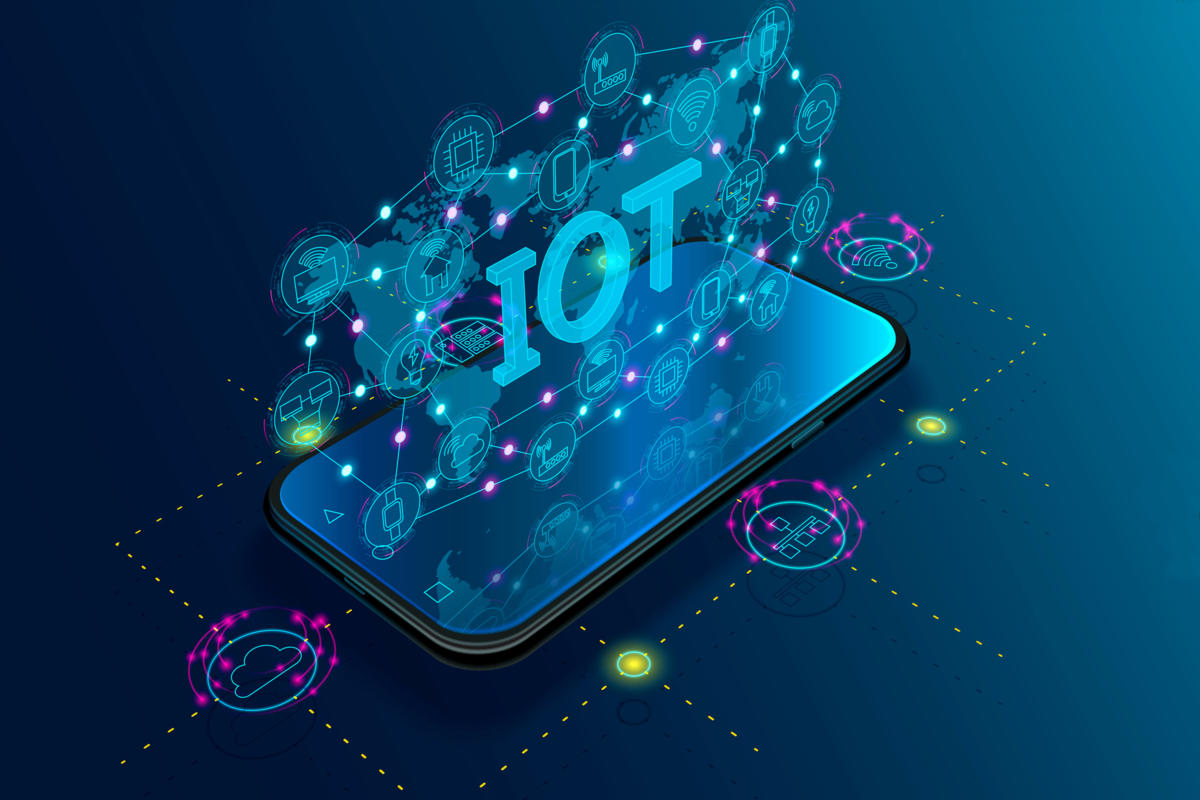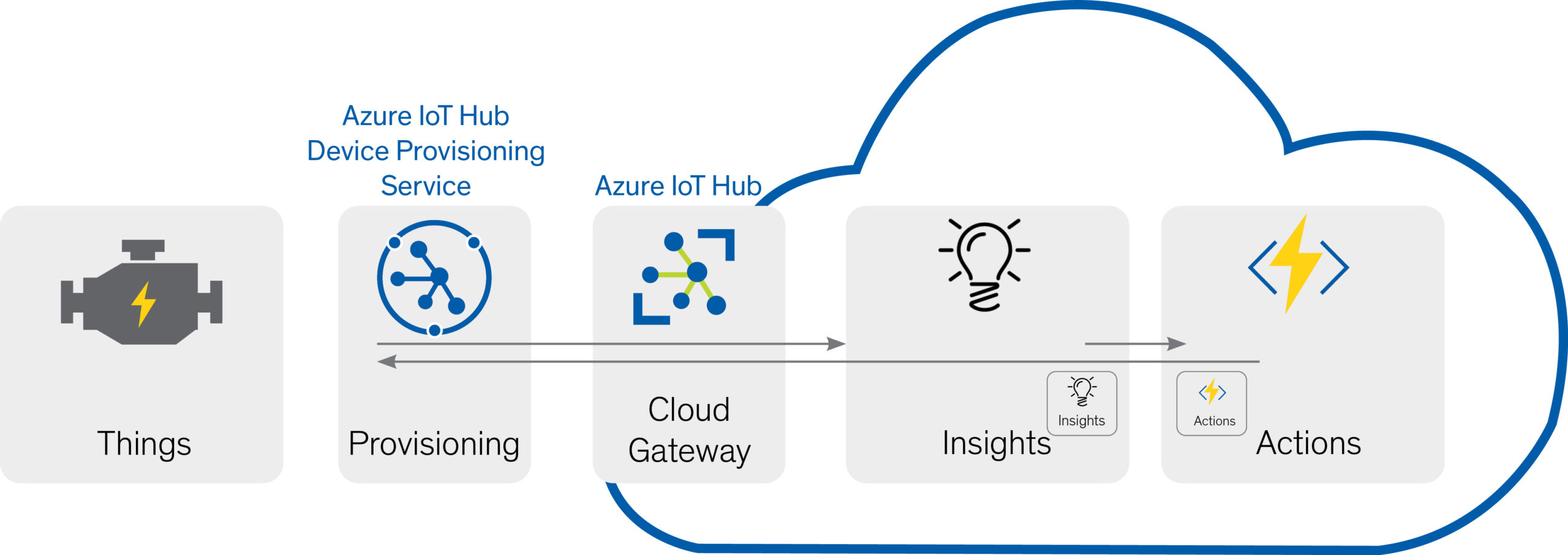Introduction
Welcome to the world of Remote Monitoring IoT – a game-changing technology that has revolutionized the way we monitor and manage various systems and devices. The Internet of Things (IoT) has paved the way for connectivity and communication between devices, enabling us to gather valuable data remotely. Remote Monitoring IoT takes this concept a step further by allowing us to monitor and control these devices from anywhere, at any time.
Imagine being able to monitor the performance of your home security system while on vacation, or keeping an eye on the temperature and humidity levels in a warehouse from the comfort of your office. Remote Monitoring IoT makes this a reality, providing real-time data and insights without physically being present.
With the rapid advancement of technology, the concept of remote monitoring has witnessed immense growth and adoption across various industries. From healthcare and manufacturing to agriculture and transportation, companies are leveraging Remote Monitoring IoT to improve efficiency, enhance safety, and streamline operations.
In this article, we will dive deeper into the world of Remote Monitoring IoT and explore its benefits, functionality, applications, as well as the challenges and limitations that come with this technology.
What is Remote Monitoring IoT?
Remote Monitoring IoT, also known as Remote Monitoring and Management (RMM), is a technology that enables the monitoring and control of devices and systems from a remote location through the use of IoT sensors and connectivity. It allows for real-time data collection, analysis, and remote management, providing valuable insights and facilitating proactive decision-making.
At its core, Remote Monitoring IoT involves the deployment of sensors or IoT devices that collect and transmit data to a centralized platform or system. These sensors can be embedded in various devices, such as machinery, equipment, vehicles, or even environmental sensors that measure temperature, humidity, and other parameters.
The collected data is then transmitted to the cloud or a centralized server, where it is processed, analyzed, and made accessible to users through web-based or mobile applications. This data transparency and accessibility enable remote monitoring and control, regardless of geographical location or physical proximity to the devices being monitored.
Remote Monitoring IoT offers a wide range of functionalities, including real-time status updates, performance monitoring, predictive maintenance, fault detection, and remote troubleshooting. With the help of advanced analytics and machine learning algorithms, this technology can identify patterns, trends, and anomalies in the data, allowing for proactive interventions and preemptive actions.
One of the key features of Remote Monitoring IoT is its ability to provide alerts and notifications. Users can set up customized thresholds and triggers for specific events or conditions. This ensures that timely alerts are sent when any abnormality or critical situation arises. For example, in industrial settings, if a machine exceeds a certain temperature limit or shows signs of failure, an alert can be immediately sent to relevant stakeholders for prompt action.
Overall, Remote Monitoring IoT offers unparalleled convenience, visibility, and control over various systems and devices. It empowers businesses to optimize operations, reduce downtime, and ensure compliance with regulations. With real-time monitoring and smart insights, companies can make data-driven decisions, enhance efficiency, and deliver exceptional customer experiences.
Benefits of Remote Monitoring IoT
Remote Monitoring IoT offers a multitude of benefits across different industries and sectors. Let’s explore some of the key advantages:
- Real-time visibility: With Remote Monitoring IoT, businesses can have real-time visibility into the performance and status of their assets. This allows for proactive monitoring and timely interventions to prevent potential issues before they escalate.
- Improved efficiency and productivity: By remotely monitoring devices and systems, companies can optimize their operations and increase productivity. They can identify bottlenecks, streamline processes, and implement proactive maintenance practices to reduce downtime and improve overall efficiency.
- Cost savings: Remote Monitoring IoT enables businesses to adopt a proactive maintenance approach. By monitoring the health and performance of assets in real-time, companies can schedule maintenance activities at the right time, avoiding costly unplanned downtime and extending the lifespan of equipment.
- Enhanced safety: Remote Monitoring IoT plays a crucial role in improving safety across various industries. For example, in the healthcare sector, remote patient monitoring devices ensure continuous monitoring of vital signs and enable early detection of health issues.
- Remote control and management: With Remote Monitoring IoT, businesses can remotely control and manage devices and systems. This eliminates the need for physical presence and enables efficient management of operations across geographically dispersed locations.
- Data-driven decision-making: Remote Monitoring IoT generates a wealth of data that can be analyzed to gain valuable insights. Businesses can leverage this data to make informed, data-driven decisions, optimize processes, and drive innovation.
- Improved customer experiences: Remote Monitoring IoT allows companies to deliver exceptional customer experiences. It enables proactive monitoring and quick response to customer issues, ensuring a high level of service and satisfaction.
These are just a few of the many benefits that Remote Monitoring IoT brings to businesses across industries. By leveraging this technology, companies can unlock new opportunities, enhance operational efficiency, and stay ahead in today’s highly competitive and connected world.
How Does Remote Monitoring IoT Work?
Remote Monitoring IoT operates through a series of interconnected components and processes. Let’s take a closer look at the key elements involved:
- IoT devices and sensors: The foundation of Remote Monitoring IoT lies in the deployment of IoT devices and sensors. These devices are equipped with various sensors that collect data from the environment or the devices being monitored. Examples include temperature sensors, motion sensors, pressure sensors, and more.
- Data collection and transmission: The IoT devices collect data from their surroundings or the systems they are monitoring. This data is then transmitted to a centralized platform or system through a wireless or wired connection. The devices use various communication protocols such as Wi-Fi, Bluetooth, cellular, or even satellite connections.
- Data storage and processing: The collected data is sent to the cloud or a centralized server where it is stored and processed. This allows for efficient data management and provides a scalable infrastructure for handling large volumes of data. Cloud platforms offer the advantage of flexible storage and computational resources, ensuring reliability and scalability.
- Analytics and algorithms: Once the data is stored, it undergoes analysis using advanced analytics techniques and algorithms. These algorithms can detect patterns, trends, anomalies, and correlations within the data, enabling the extraction of valuable insights. Machine learning algorithms can be used to continuously improve the performance of Remote Monitoring IoT systems.
- Visualization and user interface: The processed data is then made accessible to users through a web-based or mobile application. Data visualization techniques such as charts, graphs, and dashboards are employed to present the information in a user-friendly and easily understandable format. This allows users to monitor and interact with the data in real-time.
- Alerts and notifications: Remote Monitoring IoT systems can be configured to send alerts and notifications based on predefined thresholds and conditions. This ensures that users receive timely alerts in the event of any abnormality or critical situation. Alerts can be delivered through email, SMS, or push notifications on mobile devices.
- Remote control and management: In addition to monitoring, Remote Monitoring IoT allows for remote control and management of devices or systems. Users can remotely operate devices, change settings, or perform maintenance tasks without physically being present at the location. This adds convenience and flexibility to managing and maintaining assets.
By connecting these various components together, Remote Monitoring IoT systems enable seamless data collection, analysis, visualization, and control of devices and systems from a remote location. This technology unlocks a new realm of possibilities for businesses to optimize processes, improve efficiency, and make data-driven decisions.
Applications of Remote Monitoring IoT
Remote Monitoring IoT has a wide range of applications across various industries. Let’s explore some of the key domains where this technology is making a significant impact:
- Healthcare: In the healthcare sector, Remote Monitoring IoT enables healthcare professionals to remotely monitor patients’ vital signs, such as heart rate, blood pressure, and oxygen levels. This allows for timely detection of health issues, efficient management of chronic diseases, and reduces the need for frequent hospital visits.
- Manufacturing: Remote Monitoring IoT is revolutionizing the manufacturing industry by enabling real-time monitoring of production lines, machines, and equipment. This facilitates predictive maintenance, reduces downtime, and improves overall efficiency. It also ensures compliance with safety regulations and helps optimize inventory management.
- Smart Home Automation: With Remote Monitoring IoT, homeowners can remotely monitor and control various aspects of their homes, including security, temperature, lighting, and energy consumption. This enhances convenience, energy efficiency, and provides peace of mind for homeowners.
- Agriculture: Remote Monitoring IoT is transforming the agricultural sector by enabling smart irrigation, soil monitoring, and livestock monitoring. This technology helps farmers optimize water usage, improve crop health, and enhance overall productivity.
- Logistics and Supply Chain: Remote Monitoring IoT can assist in tracking and monitoring goods during transportation and storage. This ensures the efficient management of inventory, reduces loss or damage, and improves overall supply chain visibility.
- Energy Management: Remote Monitoring IoT plays a vital role in optimizing energy consumption and management. It allows for remote monitoring of energy usage, identifies areas of optimization, and enables proactive energy-saving measures.
- Environmental Monitoring: Remote Monitoring IoT is used for monitoring environmental parameters such as air quality, water quality, and noise levels. This aids in understanding and mitigating environmental issues, ensuring a healthier and more sustainable environment.
- Smart Cities: Remote Monitoring IoT contributes to the development of smart cities by monitoring and managing various aspects, including traffic flow, waste management, street lighting, and parking. This improves the overall quality of life for residents and enhances urban sustainability.
These are just a few examples of the diverse applications of Remote Monitoring IoT. As technology continues to advance, this field will witness further expansion and innovation, opening up new possibilities for businesses and individuals alike.
Challenges and Limitations of Remote Monitoring IoT
While Remote Monitoring IoT offers numerous benefits, it also faces certain challenges and limitations that need to be addressed. Let’s explore some of the key considerations:
- Data security and privacy: With the increased transmission and storage of sensitive data, ensuring data security and privacy becomes paramount. Remote Monitoring IoT systems need robust security measures to protect against unauthorized access and data breaches.
- Interoperability and standards: The diverse range of devices and technologies used in Remote Monitoring IoT can lead to interoperability challenges. It is essential to establish common standards and frameworks to enable seamless integration and communication between different systems and devices.
- Power and connectivity: Many IoT devices rely on battery power, which can limit their operational time. Additionally, remote locations or areas with poor connectivity may pose challenges in transmitting data reliably, requiring creative solutions to ensure continuous monitoring.
- Data overload and analysis: The vast amount of data generated by Remote Monitoring IoT systems can lead to data overload. Implementing effective data analysis techniques and algorithms is crucial to derive meaningful insights and avoid information overload.
- Cost implications: Implementing Remote Monitoring IoT systems may involve significant upfront costs, including the purchase of devices, software, and infrastructure. Ongoing maintenance and support costs should also be considered. However, the potential cost savings and benefits derived from the technology often outweigh these initial investments.
- Regulatory compliance: Depending on the industry and geographic location, Remote Monitoring IoT systems may need to comply with specific regulations and standards. Ensuring compliance can add complexity and require thorough understanding of legal and regulatory frameworks.
- Training and expertise: Remote Monitoring IoT systems require skilled professionals who can manage and interpret the data effectively. Companies need to invest in training and hiring professionals with expertise in IoT technologies, data analytics, and cybersecurity.
- Ethical considerations: Remote Monitoring IoT raises ethical questions regarding the collection, storage, and use of personal data. Striking a balance between the benefits of remote monitoring and individual privacy rights is crucial.
It is essential to address these challenges and limitations through continuous research, innovation, and collaboration among industry stakeholders. By doing so, Remote Monitoring IoT can continue to evolve and deliver its full potential, providing businesses with valuable insights and empowering them to make informed decisions.
Conclusion
Remote Monitoring IoT has emerged as a game-changing technology with the potential to revolutionize how we monitor and manage various systems and devices. By leveraging the power of IoT sensors, connectivity, and data analysis, businesses across industries can remotely monitor, control, and optimize their operations in real-time.
The benefits of Remote Monitoring IoT are extensive. It provides real-time visibility, improves efficiency and productivity, enables cost savings through proactive maintenance, and enhances safety across various domains. By harnessing the power of data-driven decision-making, businesses can unlock new opportunities, deliver exceptional customer experiences, and stay competitive in a highly connected world.
However, Remote Monitoring IoT also faces challenges and limitations, such as data security concerns, interoperability issues, and the need for specialized expertise. Addressing these challenges is crucial to ensure the successful implementation and adoption of this technology.
In conclusion, Remote Monitoring IoT offers immense potential for businesses to optimize their operations, enhance safety, and improve overall efficiency. By leveraging the capabilities of this technology and addressing the associated challenges, organizations can unlock new opportunities for growth, innovation, and improved customer experiences.







